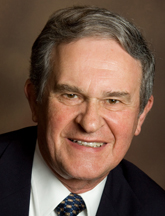 Here’s another session given by the well-loved pedagogue Marvin Blickenstaff from the 2011 OhioMTA Conference:
Here’s another session given by the well-loved pedagogue Marvin Blickenstaff from the 2011 OhioMTA Conference:
Piano Pedagogy 101: Reviewing the Basics
Mr. Blickenstaff introduced this session by commenting that at conferences and workshops, we often hear ideas for teaching intermediate and advanced students, but we don’t very often hear ideas for teaching beginners during that first year of piano lessons. The purpose of this session to give a refresher of sorts and to provide new ideas for teaching beginners, particularly in groups.
Mr. Blickenstaff basically led us through a series of short activities that he uses during group classes with beginners. He begins the first few classes with some icebreaker activities that all students can succeed doing. These initial successes set the tone for the entire year!
Here are a few examples of some of the beginner-level icebreaker activities Mr. Blickenstaff likes to use with his students:
- Ask, “Can you play a piece at the piano?” Every student can play something on the piano that they’ve made up or learned from someone else. Let them all play, then gush, “Wow, you are all already pianists! This is going to be wonderful.”
- Ask, “What is the piano made of?” Let students walk around and look at the piano and discover: wood, metal, plastic, etc.
- Explore left hand versus right hand. Here is Mr. Blickenstaff’s chant: “When you point your thumbs together, can you find the big capital L.” He also says this statement frequently: “Downward to the left, upward to the right,” to help students learn that “up” on the piano means moving to the right, and vice versa.
- Flyswatter versus a knock motions: This activity uses exaggerated motions to learn the basic piano technique of using motion from the wrist and from the elbow. He instructs students to pick up that imaginary flyswatter with the right hand from the table. Swat 3 flies together. How do you move? Observe the motion from the elbow. Now, suppose the doorbell doesn’t work at your friend’s house. So instead you say (in rhythm), “Knock, knock, knock–, an-y-bod-y home? Yes, yes, yes–, ev-ry-bod-y’s here.” Observe the motion from the wrist. Once students can recognize and reproduce these motions, they can together choose which motion will be more efficient in different circumstances. I.e., smaller motions are more efficient for faster notes/tempi.
Later on, activities can become more complex and utilize some of those basic skills learned during the first few weeks.
Mr. Blickenstaff also provided some tips and guidelines for lesson planning. Here are my favorites:
- For a well-rounded lesson at the first lesson and every lesson, include TERRAC: technique, expressivity, creativity, rhythm, reading, and aural awareness.
- Another tip to write on the top of your page while lesson planning: OTB… “Off the bench!” Be sure to find activities that get change the pace and get the student moving.
- Successful teaching at the early levels means three stages: Preparation, Presentation, and Reinforcement. The stage that most commonly gets missed by teachers is preparation. If you do not lesson plan and simply follow the piano method with your students, you cannot prepare students for the next concept to be learned. Teachers must always know what the next concept is for each student. Piano methods also fail to do enough reinforcement. It’s up to the teacher to find multiple ways to reinforce concepts, using singing, moving, creating, sight-reading, etc.
- Research has shown that the best way to teach new concepts is to do so in this order: Experience, Symbol, then Name. Students should experience the concept aurally and physically first, then be shown the symbol, and lastly be introduced to the name/term.
- Find the easiest way to do things to ensure that the student will be successful.
- “Remember that children take lessons for one reason: to make exciting sounds at the piano. Anytime our lessons do not emulate this goal, we are nurturing a potential dropout.” — approximate quote from pedagogue Richard Chronister.
I just LOVE all the inspiration and pedagogically-sound activities that Mr. Blickenstaff provided in this session! If these notes doesn’t show just how important ongoing professional development is for music teachers, I don’t know what does. Personally, I think every teacher should be a member of a local association and attend conferences whenever possible. Okay, I’ll get off my soap box now. 🙂 Hope you enjoyed the notes!
P.S. — Is anybody else currently saving up to get to the 2012 MTNA conference in NYC in March? I am…not sure if it’s feasible yet, but I’m trying to figure out a way to swing it! Unfortunately, I don’t qualify for the student rates anymore…bummer. 😉


I love these fabulous tips… especially the sequencing of experience, symbol then name. Thanks for taking such thorough notes and sharing them!
You’re welcome, Heidi!
Thanks a lot for this post, it helps a lot in my teaching as I don’t have much experience in piano teaching 🙂 …